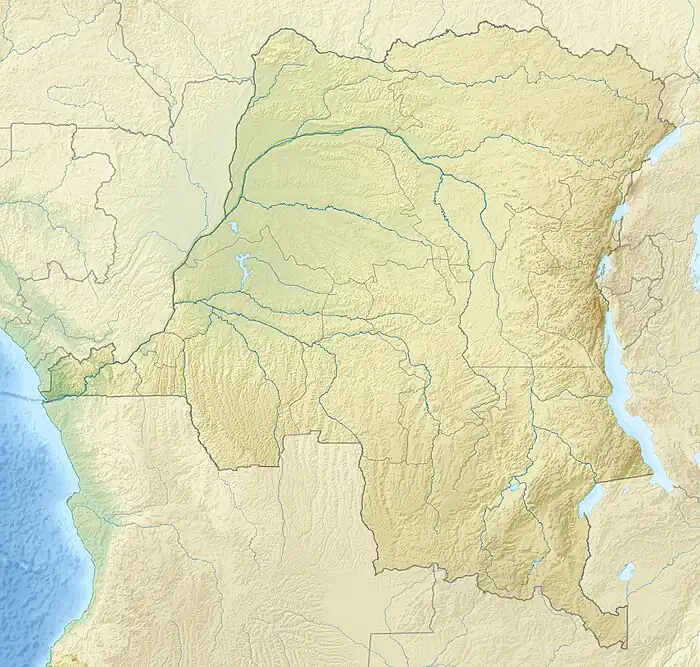Nepoko River
The Nepoko River (French: Rivière Nepoko) is a river in the Democratic Republic of the Congo. It joins the Ituri River at the town of Bomili to form the Aruwimi River.
| Nepoko River | |
|---|---|
 | |
| Location | |
| Country | Democratic Republic of the Congo |
| Physical characteristics | |
| Mouth | Aruwimi River |
• location | Africa |
• coordinates | 1.674662°N 27.007828°E |
The river separates different groups of the Budu people of Wamba Territory, who speak different dialects on the western Ibambi side of the river and on the eastern Wamba side, although they consider themselves one people.[1] The river divides the Catholic Diocese of Wamba into two.[2] It runs through the Okapi Wildlife Reserve.[3] Its southern tributaries include the Uala, Afande, Mambo and Ngaue rivers.[4]
The explorer Wilhelm Junker reached the river on 6 May 1882. He described it as about a hundred yards wide at low water. The partly rocky banks, over thirty feet high, stood back to form flat margins fifty to sixty feet wide which were flooded at high water.[5] In the colonial era a car ferry operated across the river, although not always during high or low water. It consisted of a number of dugout canoes lashed together sideways and covered with a wooden platform, and was pulled across the river by a cable.[6]
References
- "Budu: A language of Democratic Republic of the Congo". Ethnologue. Retrieved 2011-10-25.
- "Area of coverage". PYGMEES WAMBA. Archived from the original on 2012-04-25. Retrieved 2011-10-25.
- "Okapi Wildlife Reserve". Guide for Africa. Retrieved 2011-10-25.
- Roy Richard Grinker (1994). "Houses in the Rain Forest". UNIVERSITY OF CALIFORNIA PRESS. Retrieved 2011-10-25.
- Enid Schildkrout, Curtis A. Keim (1998). The scramble for art in Central Africa. Cambridge University Press. p. 141. ISBN 0-521-58678-X.
- Frank L. Lambrecht (1991). In the shade of an acacia tree: memoirs of a health officer in Africa, 1945-1959. American Philosophical Society. p. 123. ISBN 0-87169-194-9.